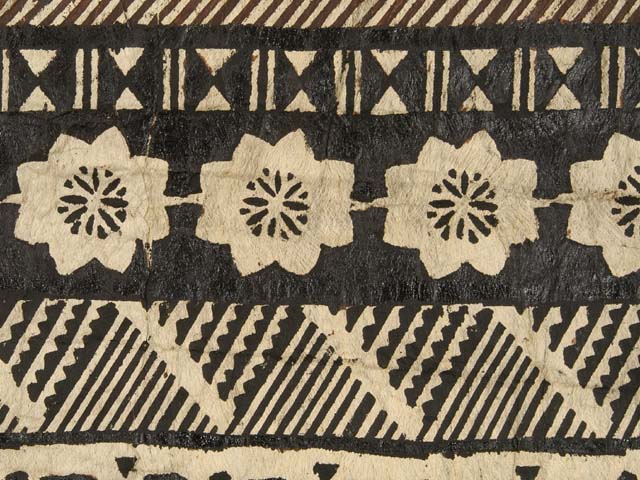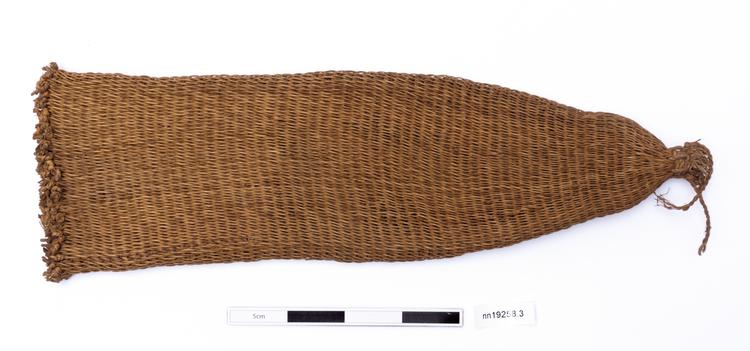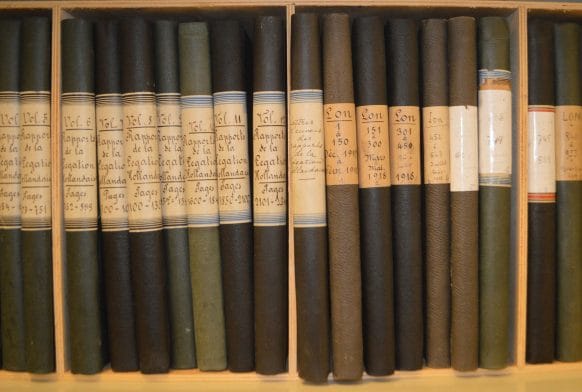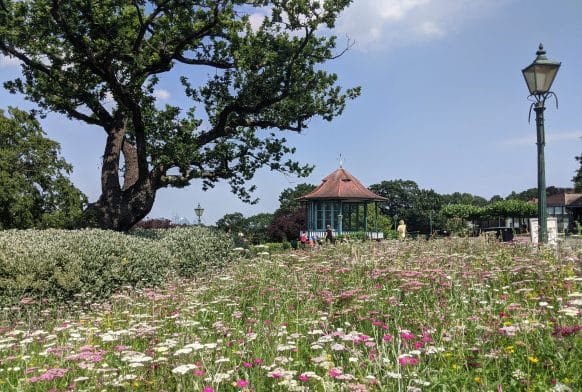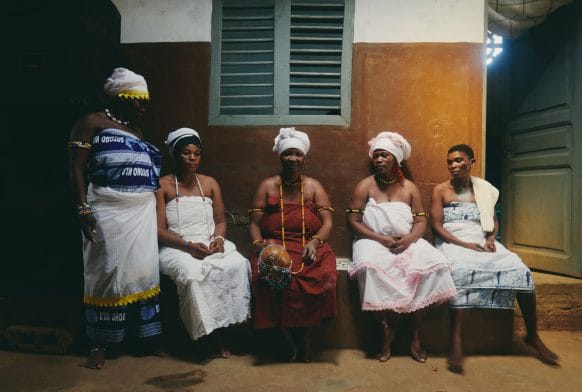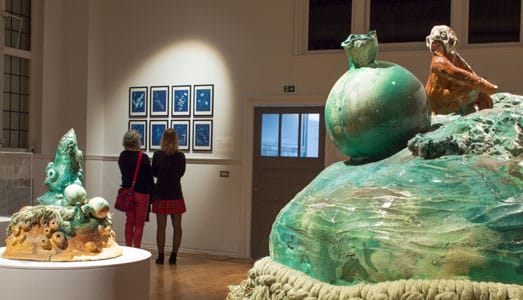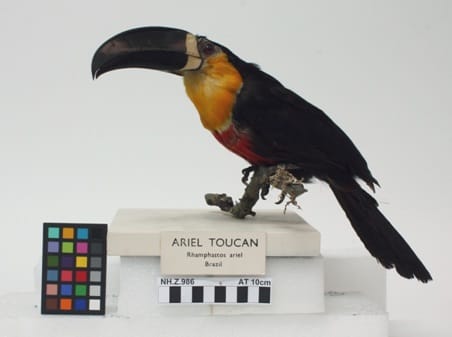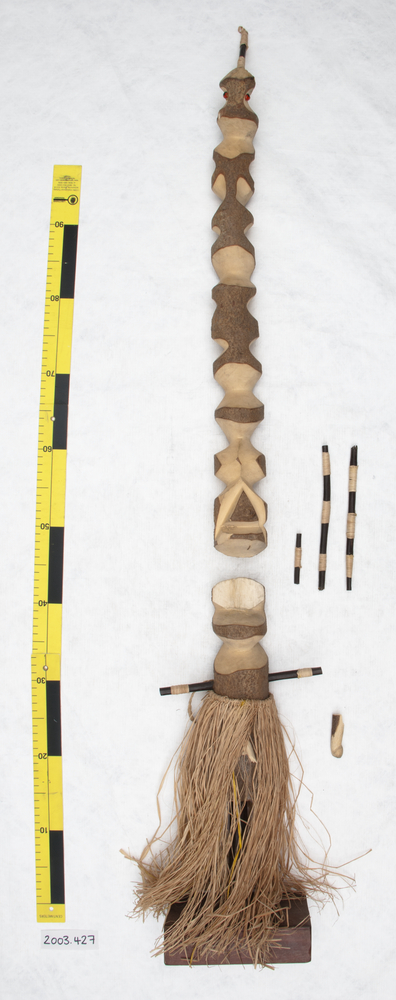
'Monkey Ladder' - made of corkwood in the mid 1990s by Oswald Hussein. It is based on the myth of the spirit Masakuru man that lives under water. The Masakuru man has red eyes, which represent his 'evil' will. He struggles with the shaman who stops him from killing people. The Masakuru man comes with the tide and floats among the leaves. He is a water spirit that exercises different powers by sending different messages. According to the Arawak myth, the shaman and the Masakuru spirit had a fight and the shaman put some shrimps in the spirit's eyes. The three sticks at the top of the head represent the shrimps. The shape of the carving represents a ladder. The bottom represents the tradition or culture of the people - the spirit dresses in a local way to disguise itself. The phallus shows that the Masakuru spirit is a male spirit.
A sculpture carved from a branch of wood with speckly greyish bark still on the outside, and cream-coloured wood on the inside. A figure stands on a short stick of dark wood set into a plinth of the same dark wood. The figure has a grass skirt tied around it, and immediately above that a small stick of dark wood passing through a central hole and protruding at both sides. Grass or plant fibres have been wrapped around each end of this stick. Above this, the main body of the sculpture is formed by wedges or portions of the main branch being removed from alternating sides. At the top are two orange and black beads set into the wood, and above them, three short sticks of dark wood are set into the top of the piece, pointing upwards, with grass or plant fibre wrapped around the ends.
The object has significant damage. The main shaft has snapped and a number of the attached sticks have broken off.




